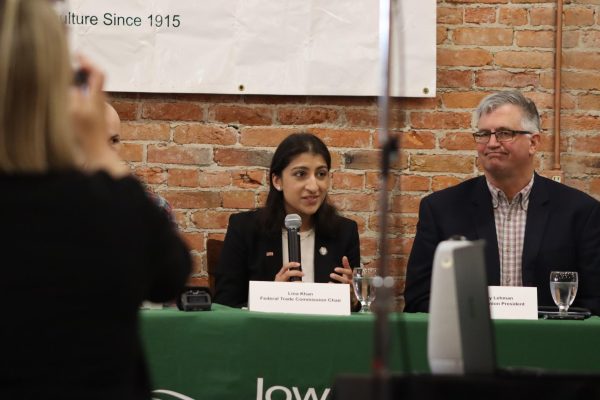Anchors aweigh to honor alumnus
July 1, 2010
ISU alumnus Howard Otto Lorenzen, known as the “Father of Electronic Warfare,” has been honored with the launch of a new U.S. Navy ship for his work with the Naval Research Laboratory.
The U.S. Naval Ship Howard O. Lorenzen was christened Saturday in Pascagoula, Miss. This is the second ship in U.S. Navy history to honor a NRL scientist for contributions made to naval and civilian research.
The ship is 12,575 tons and 534 feet in length. The ship is designated as a U.S. naval ship and will have a combined crew of civilian mariners, who will operate and navigate the ship, as well as military and civilian technicians from other government agencies who will operate shipboard monitoring equipment.
While Lorenzen died in 2000, his daughter, Susan Lorenzen Black, was there for the ship’s christening.
“Lorenzen understood, and the Navy realized, the value and relevance of not only detecting enemy radio and electronic transmissions, but that recording, analyzing and deciphering these transmissions and developing intuitive countermeasures would prove to be an integral and vital function to the future of national security,” said Pete Wilhelm, director of the NRL’s Center for Space Technology in a news release.
Lorenzen was a 1935 electrical engineering graduate. In his lifetime, he received distinguished awards including the NRL Captain Robert Dexter Conrad Award for Scientific Achievement, and a Navy Meritorious and Distinguished Civilian Service Award.
Soon after college he started a 33-year career at the NRL based in Washington D.C. Beginning his NRL career in 1940 as a radio engineer, Lorenzen began research on electronic countermeasures when he unintentionally jammed the signal of radar being tested at the lab’s radar division.
While at NRL, he developed radio countermeasures that could exploit, detect or interrupt electromagnetic transmissions for military purposes. This was a pioneering concept that was the catalyst for electronic warfare we know today.
As the U.S. entered World War II, Lorenzen’s research focused on developing electronic means to detect, locate, jam and deceive enemy radar and other electronic locating equipment.
Once the war was over, Lorenzen continued to work on new electronic countermeasure technologies and modify existing ones. In the years following the war he developed the first U.S. magnetic tape recorder for intercept work, and tunable microwave intercept receivers equipped in Navy ships, shore stations and aircraft.
Lorenzen went on to become the NRL’s first superintendent of electronic warfare in 1966. He also led the development of defense equipment for naval aircraft to guard against guided missiles and developed the nation’s first portable radar equipment.
Lorenzen was appointed superintendent of NRL Space Systems in 1971 and served in that role until his retirement in 1973.
When he retired, he continued in his passion for radio through ham radio. Hams, or ham radio users, use various types of radio equipment to communicate with other radio amateurs. He went on to become a leader of Issaquah Amateur Radio Club.
Lorenzen accepted the NRL Captain Robert Dexter Conrad Award for Scientific Achievement, the group’s highest honor, in 1998, on the 75th anniversary of the NRL.
















